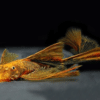To provide the best experiences, we use technologies like cookies to store and/or access device information. Consenting to these technologies will allow us to process data such as browsing behaviour or unique IDs on this site. Not consenting or withdrawing consent, may adversely affect certain features and functions.
The technical storage or access is strictly necessary for the legitimate purpose of enabling the use of a specific service explicitly requested by the subscriber or user, or for the sole purpose of carrying out the transmission of a communication over an electronic communications network.
The technical storage or access is necessary for the legitimate purpose of storing preferences that are not requested by the subscriber or user.
The technical storage or access that is used exclusively for statistical purposes.
The technical storage or access that is used exclusively for anonymous statistical purposes. Without a subpoena, voluntary compliance on the part of your Internet Service Provider, or additional records from a third party, information stored or retrieved for this purpose alone cannot usually be used to identify you.
The technical storage or access is required to create user profiles to send advertising, or to track the user on a website or across several websites for similar marketing purposes.

















Laura Stevens (verified owner) –
I am absolutely thrilled with my Chameleon Whiptail Catfish! After introducing him to my community tank about a month ago, he has not only thrived but has also become a favorite among my family and friends. This South American catfish is not just stunning with its vibrant colors, but it also has a calm demeanor that makes it perfect for my tropical fish setup. I have a 55-gallon tank with several other species, and he gets along wonderfully with everyone.
What really amazed me was how quickly he adapted to his new environment. I added him in the morning, and by the evening, he was already exploring and peeking out from behind plants. I love that he helps keep the tank clean by grazing on algae, which has made a noticeable difference.
Minor concern? He does like to hide a bit more than I expected, so make sure you have plenty of hiding spots! Overall, I would recommend the Chameleon Whiptail Catfish to any aquarist looking to add a unique, peaceful fish to their collection. He truly brings life to my aquarium, and I couldn’t be happier with this purchase!
Emily Carter (verified owner) –
I recently added a Chameleon Whiptail Catfish to my tropical aquarium, and I couldn’t be happier! After a week of observation, I can confidently say this fish is a gem. Its unique colors and patterns are stunning, and it has a calm demeanor that makes it a perfect companion for other tank mates. I appreciate how easy it is to care for, making it ideal for beginners like myself. Compared to other bottom-dwellers I’ve tried, such as the common plecostomus, the Chameleon Whiptail is much less aggressive and doesn’t disturb the substrate as much, which keeps my tank looking pristine. One minor consideration is that it enjoys hiding places, so I recommend adding some driftwood or caves to your setup. In just two months, my catfish has thrived, contributing to both the aesthetic and the health of my aquarium. I highly recommend this species to anyone looking to enhance their tropical tank. It’s a joy to watch and has become a beloved part of my aquatic family!